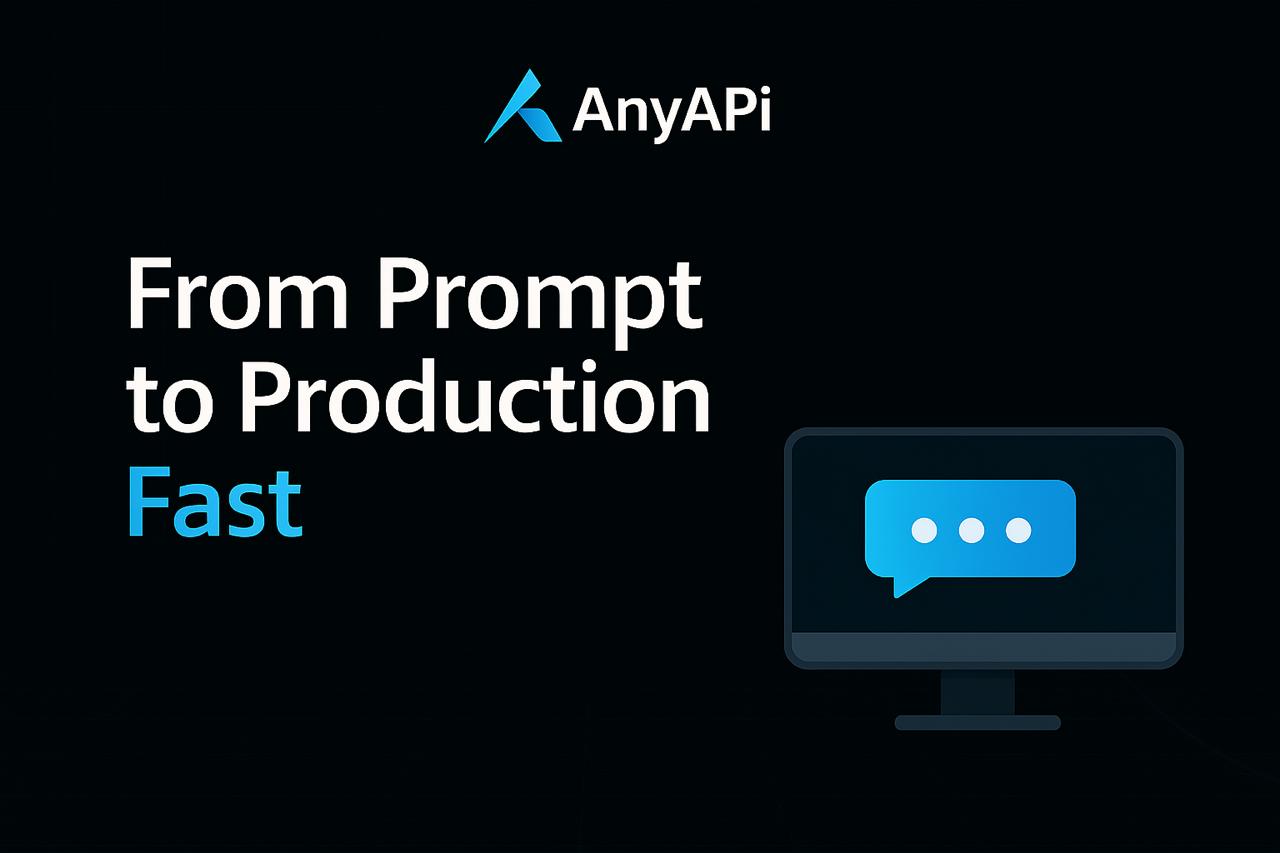From Prompt to Production: Deploy AI in Minutes

You had the idea. The prompt works in your playground. Now comes the part no one talks about – actually getting that AI feature into production.
It’s not just about writing a clever prompt. It’s about picking a model. Handling rate limits. Dealing with error responses, API versioning, provider dashboards, and context windows.
And if your product needs multiple models? You’re suddenly building a small backend platform just to call someone else’s.
This is where most developers lose time – not in building AI features, but in integrating them.
Why AI Integration Still Feels Hard
1. Every Provider Is Its Own Universe
OpenAI, Anthropic, Google, Mistral… they each offer something slightly different. Auth flows vary. Payload formats don’t match. Docs are inconsistent. You want to test Claude and GPT side by side? You’ll need two API keys, two sets of SDKs, and two sets of rate limits to monitor.
2. Latency and Region Headaches
It’s one thing to test an LLM on your local machine. But when you ship to users across EU, APAC, or South America, the difference between “snappy” and “slow” can be hundreds of milliseconds.
Unless you’re doing region-aware routing, you won’t even know.
3. Context Windows, Safety Filters, and Pricing… Oh My
Claude 4 Sonnet supports 200K tokens. GPT-4 Turbo doesn’t. Gemini Pro adds JSON formatting. Mistral offers speed but shorter context.
Add billing and usage policies into the mix, and managing more than one model becomes a full-time job.
What Shipping in “Minutes” Really Means
Let’s set the benchmark:
You’ve written a prompt like
“Summarize this legal contract in plain English.”
Your task now is to make it production-ready. Not just run it once, but wrap it in something that works for:
- Input from your users
- Output formatting
- Rate limits and retries
- A/B testing across providers
And you need this live this week. That’s the real challenge.
Mini Scenarios: What Fast AI Deployment Looks Like
SaaS Support Assistant
A two-person SaaS team wants to launch in-app chat support. They prototype using GPT-4 Turbo, but realize Claude Sonnet’s long memory suits their customer base better. Switching should be as simple as swapping a model name—no rewrites, no key changes.
Legal AI Summarizer
A legal-tech startup builds a feature that digests 50-page documents. During testing, Claude works better. But their investors are worried about uptime, so they want fallback to GPT if Claude is unavailable. How do they build routing logic and handle cost differences?
Internal DevTools Copilot
A product team inside a fintech company wants to embed an AI assistant into their dashboard. It uses Mistral for fast suggestions and GPT-4 for deep analysis. Switching between models is easy—until someone adds Gemini to the mix, and suddenly integration complexity explodes.
The Core Requirements for Real-World AI
If you’re going from prompt to production in a live product, these are the non-negotiables:
Model Flexibility
You should be able to test Claude, deploy with GPT, and route fallback to Mistral—without rewriting everything.
Unified API Format
The underlying API should stay the same, no matter what model you use. It saves time and reduces bugs.
Region-Aware Routing
A model that works fast in the US might lag in Tokyo. Route requests intelligently without needing DevOps to step in.
Cost Visibility
Not all tokens are priced equally. You need real-time insight and soft limits to keep things under control.
Async and Streaming Options
Modern apps need flexibility. Whether you’re doing batch summaries or real-time responses, the LLM backend should support both.
The Fastest Way to Deploy AI at Scale
All of the above points highlight a common pattern: the real challenge with LLMs isn’t the AI itself. It’s the plumbing.
That’s where AnyAPI comes in.
AnyAPI offers a unified platform to access hundreds of LLMs – Claude, GPT, Mistral, and more – with one API key, one format, and built-in routing, pricing controls, and developer tools. Whether you’re a solo founder or leading an AI team, AnyAPI turns “prompt to production” into something you can actually do in minutes.
Explore the playground. Compare models. Ship faster.
FAQ
Do I need separate API keys for each LLM provider?
No, with a unified platform (like AnyAPI), you can access all models with one key.
Which model is best for customer support?
Claude Sonnet is great for long memory, but GPT-4 is more structured. It depends on the use case.
What if a model goes down?
Routing logic and fallback options can automatically reroute to other models without downtime.
Can I compare costs between models?
Yes, some tools give real-time cost dashboards per model, request, or endpoint.





